
Baton Rouge Photographs and Architecture
Architectural Simplicityli
All of our architectural past is not reflected in massive stone edifices of Gothic design, towering skyscrapers or ornate Victorian mansions.
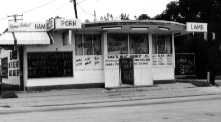 Simple
structures often give a valuable view into day-to-day life as it existed
in the past, perhaps as recent as a generation ago...
Simple
structures often give a valuable view into day-to-day life as it existed
in the past, perhaps as recent as a generation ago...
Characteristic of many Baton Rouge businesses of the 1940s and 1950s was Sam's Meat Market, on Government Street at South Eugene Street, across from Baton Rouge High School.
"Mom and Pop" businesses such as Sam's, and Fred & Marie's, were a mainstay in Baton Rouge life. Their business plan was simple, and effective: personal service, reasonable prices, honesty, integrity, dependability, and fine quality.
Here are a few glimpses of Baton Rouge a few years ago ...
Family visiting the Huey Long Statue at the Louisiana State Capitol July, 1948 |
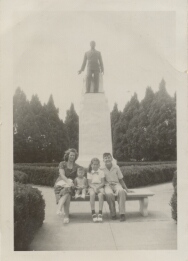 |
Sam's Meat Market, Government Street, across from Baton Rouge High School Demolished 1996, now site of an out-of-the-mold pizza establishment (photo September, 1978) |
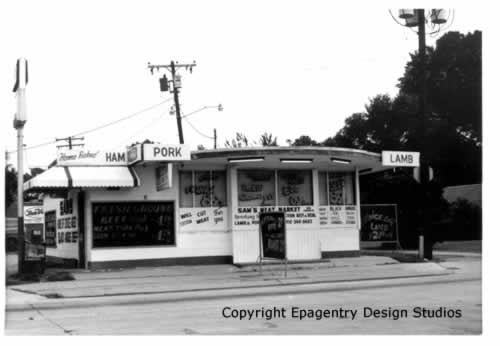 |
Fred & Marie Government Street, Baton Rouge, Louisiana August, 1978 |
 |
Huddle House Third Street, Downtown Baton Rouge, Louisiana Demolished, now the site of the LaSalle Garage May, 1986 |
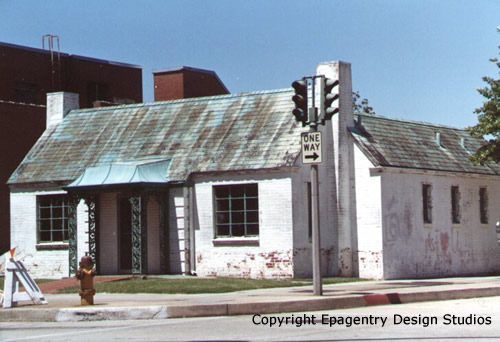 |
Nat's Auto CleanUp, Main Street 1978 Now demolished |
 |
Demolition, downtown Baton Rouge, in preparation for construction of the new LaCapitol Federal Credit Union August, 1978 |
 |
USS Kidd arriving in downtown Baton Rouge, on May 23, 1982, with the Samuel Clemens and I-10 bridge in the background. She had been towed from the Philadelphia ship yard where she had been part of the Atlantic Reserve Fleet. The welcoming crowd was reported to be over 10,000 onlookers. The ship opened to the public for the first time on August 27, 1983. Photographed and Copyright by the Author |
 |
Shown here is the US Navy Fletcher-class Destroyer DD661, the Kidd, nearing the dock on May 23, 1982, in downtown Baton Rouge. The Kidd was never modernized and is the only Fletcher-class museum ship to reep her World War Il configuration. Photographed and Copyright by the Author |
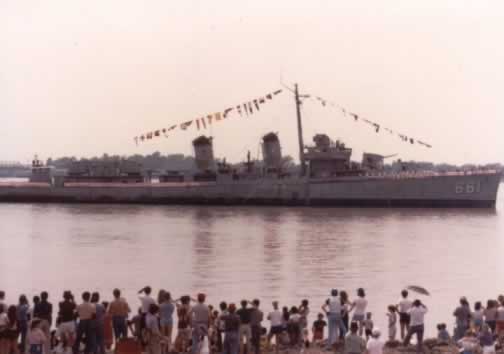 |
The Homestyle Architecture
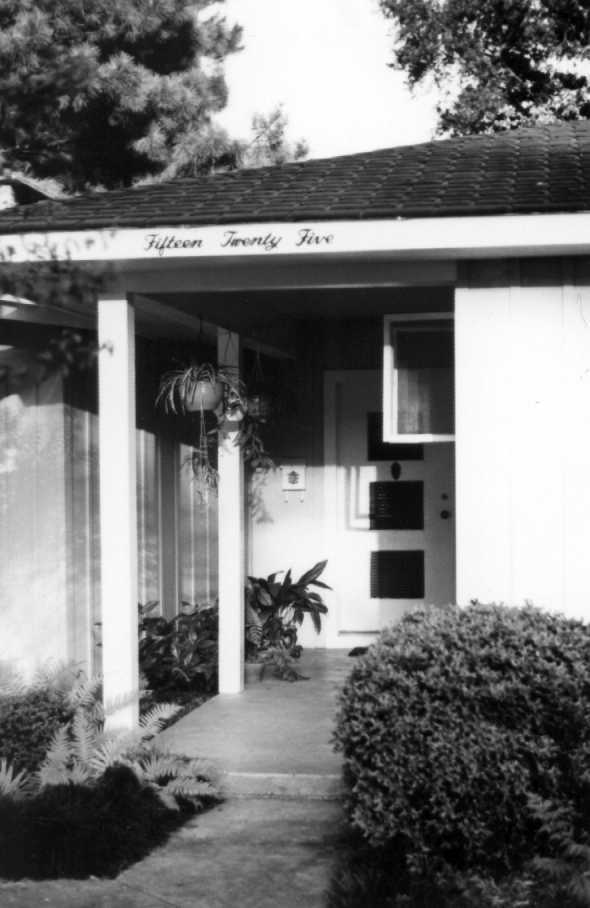 |
As Baton Rouge grew beyond its historic boundaries, the architecture of the houses evolved and changed.
In the Garden District, the bungalow was a popular choice of many young families along Park Boulevard.
These small, single-story homes have stood the test of time and many have been restored to their original functionality and usefulness.
The ranch style was an extrapolation and fascination of America's love with the simplicity and clean lines of the westward movement.
Characteristic of many suburban housing developments of the 1940s and 1950s, the low roof lines and open floor plans of the ranch remained popular with young families on the grow, even into the early 1970s.
"Modern" homes were being built in new subdivisions, and on streets such as Westdale, Woodside and Avondale, in the Garden District, the Government Street corridor, North Boulevard, Goodwood, Terrace Avenue, and all around town.
Young Capitol Admirer August, 1978 "If we are careful, we can preserve our past for the enjoyment and understanding of our children". |
 |
|
| Cathedral Annex with Education Building (demolished) in background | 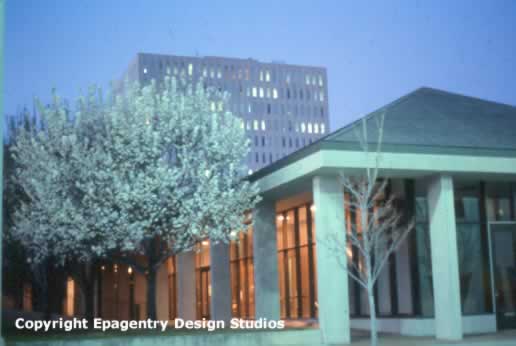 |
|
Ethel Mae Apartments, built 1928 Demolished Baton Rouge, Louisiana |
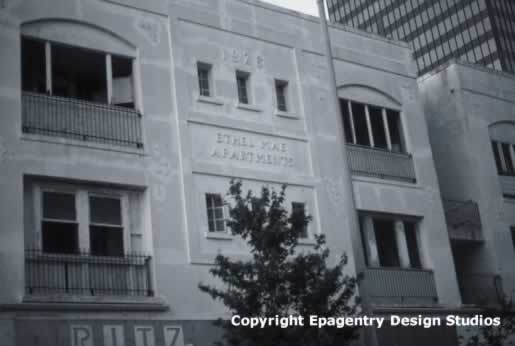 |
|
Downtown Baton Rouge, seen from the Louisiana State Capitol, circa 1970s. Notice the State Education Building (left), and the Natural Resources Building (right), both imploded and demolished in 2003 |
 |
|
| Downtown Baton Rouge seen from the grounds of the Louisiana State Capitol, circa 2000 |  |
|
Balancing
the Heritage of the Past and the Needs of the Future
The delicate balance between the past and the future can be achieved. Buildings reflecting our history can coexist with our needs of the present and the future.
Re-use of buildings offers many advantages, financial and otherwise.And efforts of programs such as the National Register of Historic Places have been highly successful in creating awareness and actually preserving our heritage.
A few final glimpses of Baton Rouge from the late 1970s...
The Old State Capitol, Baton Rouge, Louisiana August, 1978 |
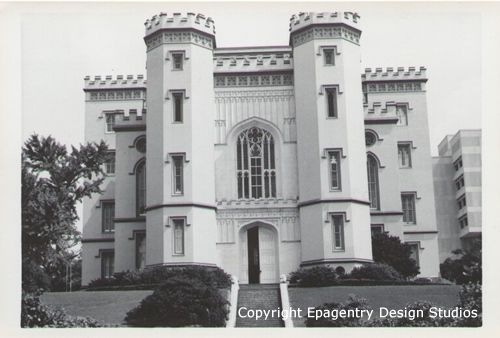 |
|
The Yazoo and Mississippi Valley Railroad Station, River Road, Baton Rouge (now the Louisiana Arts and Science Museum) September, 1978 |
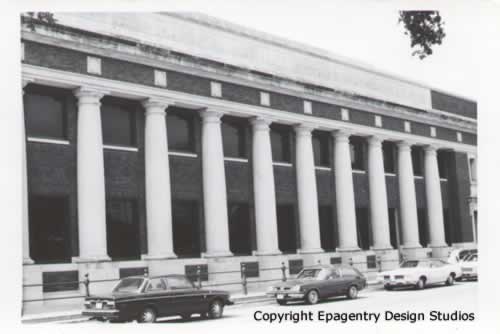 |
|
Remnants of the Baton Rouge street car system 11th Street looking south towards Convention Street Baton Rouge, Louisiana September, 1978 |
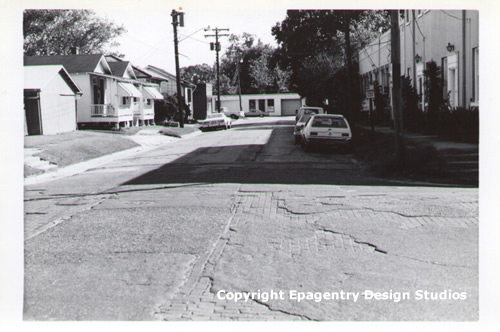 |
|
The Last of the Streetcar Tracks, East Boulevard, just off Government Street Baton Rouge, Louisiana September, 1978 "We can only hope that our tracks will not lead us to an architectural dead-end". |
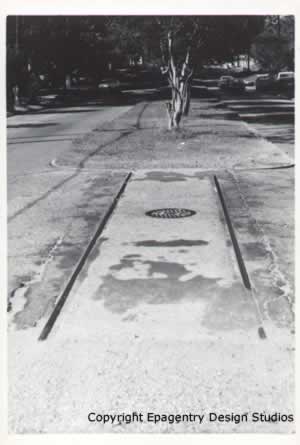 |
|